
Purmamarca: The Jewel of the Seven Colors Hill
Discover Purmamarca in Argentina, a charming village at the foot of the Hill of Seven Colors, offering vibrant markets, historic sites, and stunning landscapes in the Quebrada de Humahuaca.
Purmamarca is a picturesque village nestled at the base of the stunning Cerro de los Siete Colores (Hill of Seven Colors) in Argentina's Jujuy province. This small town is a gateway to incredible natural wonders and is rich in cultural heritage. The multicolored hill, with its striking hues of red, orange, yellow, green, and purple, is a sight to behold and draws visitors from around the world. Wander through the quaint streets lined with adobe houses and vibrant markets where local artisans sell handmade crafts, textiles, and souvenirs. The town’s central square, Plaza 9 de Julio, is a bustling hub surrounded by historic buildings and offers a glimpse into the traditional way of life. Nearby, the Santa Rosa de Lima Church, built in the 17th century, stands as a testament to the town's colonial past. For those seeking adventure, Purmamarca is an excellent base for exploring the surrounding Quebrada de Humahuaca, a UNESCO World Heritage site known for its dramatic landscapes and ancient ruins. Hiking, biking, and photography enthusiasts will find endless opportunities to capture the beauty of this unique region. The serene atmosphere, combined with the breathtaking scenery and rich cultural experiences, makes Purmamarca a must-visit destination in Argentina.
Local tips in Purmamarca
- Visit early in the morning to see the Hill of Seven Colors at its most vibrant.
- Bring cash, as many local vendors and small businesses do not accept credit cards.
- Wear comfortable shoes for walking, as the village streets are cobblestone.
- Stay hydrated and use sun protection, as the high altitude can lead to dehydration and sunburn.
- Try the local cuisine, especially the empanadas and tamales.
Purmamarca: The Jewel of the Seven Colors Hill
Purmamarca is a picturesque village nestled at the base of the stunning Cerro de los Siete Colores (Hill of Seven Colors) in Argentina's Jujuy province. This small town is a gateway to incredible natural wonders and is rich in cultural heritage. The multicolored hill, with its striking hues of red, orange, yellow, green, and purple, is a sight to behold and draws visitors from around the world. Wander through the quaint streets lined with adobe houses and vibrant markets where local artisans sell handmade crafts, textiles, and souvenirs. The town’s central square, Plaza 9 de Julio, is a bustling hub surrounded by historic buildings and offers a glimpse into the traditional way of life. Nearby, the Santa Rosa de Lima Church, built in the 17th century, stands as a testament to the town's colonial past. For those seeking adventure, Purmamarca is an excellent base for exploring the surrounding Quebrada de Humahuaca, a UNESCO World Heritage site known for its dramatic landscapes and ancient ruins. Hiking, biking, and photography enthusiasts will find endless opportunities to capture the beauty of this unique region. The serene atmosphere, combined with the breathtaking scenery and rich cultural experiences, makes Purmamarca a must-visit destination in Argentina.
When is the best time to go to Purmamarca?
Iconic landmarks you can’t miss
Pucará de Tilcara
Explore the ancient Pucará de Tilcara, a historical fortress in Jujuy, Argentina, showcasing rich indigenous culture and stunning Andean landscapes.
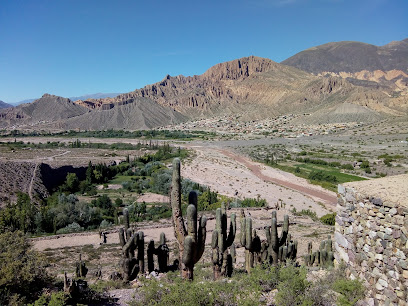
Mirador A la cercanía de los 14 Colores del Hornocal
Explore the breathtaking Hornocal Mountains in Jujuy, Argentina, where vibrant colors paint the landscape and adventure awaits.
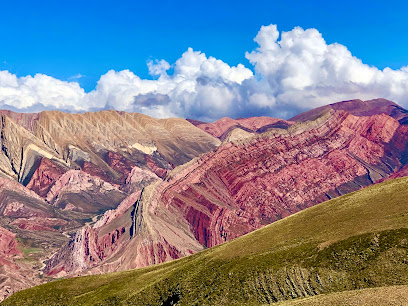
Purmamarca Jujuy
Discover the enchanting beauty and vibrant culture of Purmamarca, a hidden gem in Argentina's Jujuy Province, home to the stunning Seven Colored Hill.
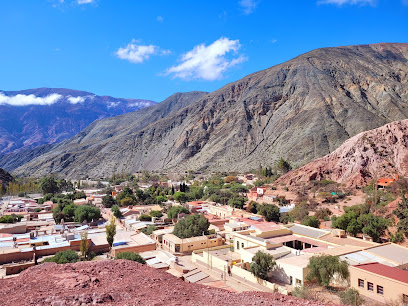
Cerro El Porito
Discover the breathtaking views and vibrant landscapes of Cerro El Porito, a must-visit scenic spot in Purmamarca, Jujuy Province, Argentina.
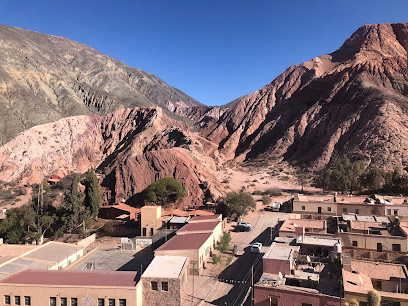
9th of July Square
Explore the vibrant 9th of July Square in Purmamarca, where stunning landscapes meet rich cultural heritage in the heart of Jujuy Province.
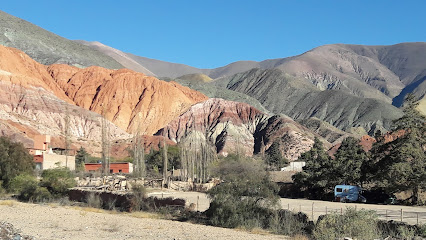
Garganta del Diablo
Experience the breathtaking beauty of Garganta del Diablo, a stunning gorge in Jujuy, Argentina, perfect for hiking and nature lovers seeking adventure.
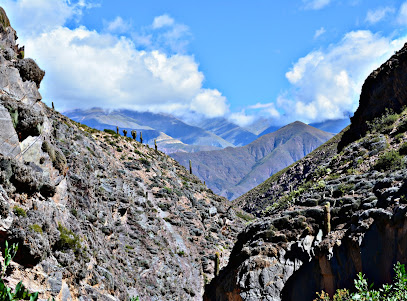
Monumento a los Héroes de la Independencia
Explore the Monumento a los Héroes de la Independencia in Humahuaca, a historical landmark celebrating Argentina's independence with stunning views and rich culture.
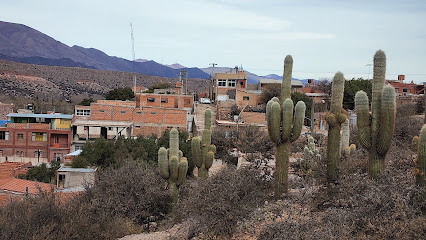
Cerro de los Siete Colores Viewpoint
Discover the breathtaking beauty of Cerro de los Siete Colores Viewpoint in Purmamarca, Jujuy Province - a vibrant natural wonder waiting to be explored.
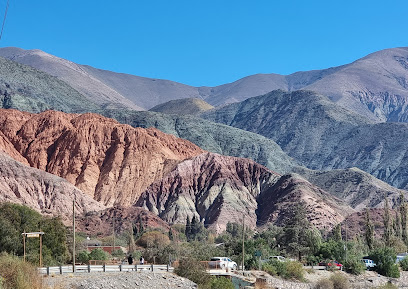
Comienzo Quebrada de las Señoritas
Discover the breathtaking beauty of Comienzo Quebrada de las Señoritas in Jujuy Province, a hiker's paradise filled with stunning landscapes and vibrant rock formations.
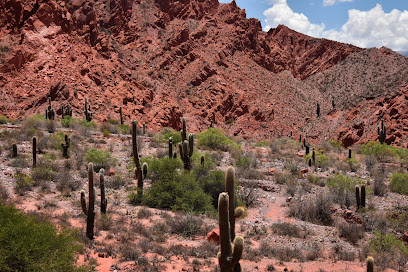
Los Morteros
Experience authentic Argentinian cuisine and exquisite wines at Los Morteros in Purmamarca, surrounded by breathtaking mountain views.
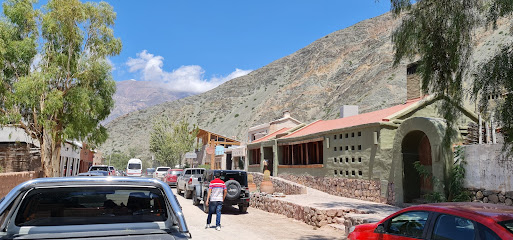
Cerro de los Siete Colores
Explore the breathtaking Cerro de los Siete Colores, a stunning mountain peak in Purmamarca, famous for its vibrant colors and natural beauty.

LA COMARCA HOTEL
Experience the serene beauty and vibrant culture of Purmamarca at La Comarca Hotel, your perfect retreat in Jujuy Province.
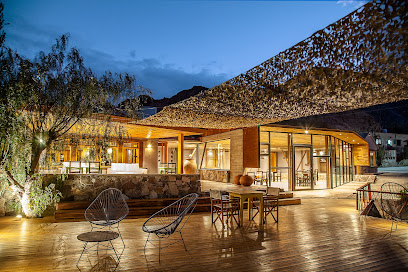
Hotel El Manantial del Silencio
Discover tranquility at Hotel El Manantial del Silencio in Purmamarca, where stunning landscapes meet exceptional hospitality for an unforgettable stay.
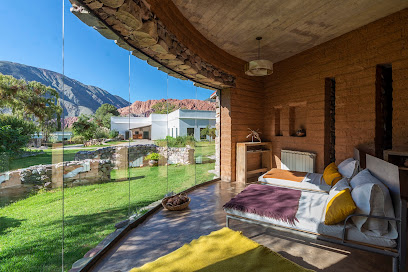
Tierra de Colores
Discover the culinary wonders of Tierra de Colores, where local flavors meet stunning mountain views in Purmamarca.
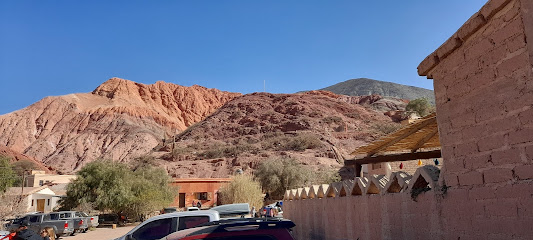
Colores de Purmamarca
Explore the breathtaking beauty and vibrant culture of Colores de Purmamarca, a must-see gem in Jujuy Province, Argentina.
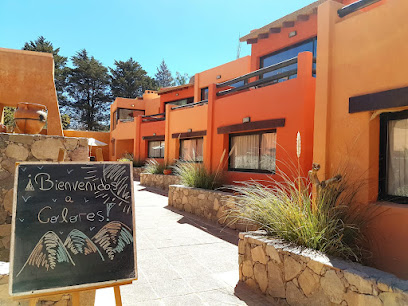
Unmissable attractions to see
Cerro El Porito
Discover the vibrant landscapes and breathtaking views at Cerro El Porito, a scenic gem in Purmamarca, Jujuy Province, Argentina.
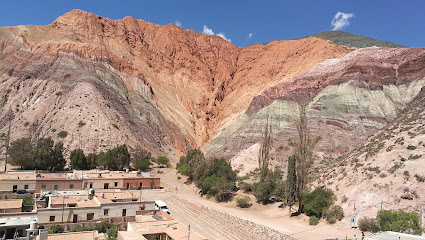
9th of July Square
Discover the serene beauty and vibrant culture of 9th of July Square in Purmamarca, a must-visit park in the heart of Jujuy Province, Argentina.
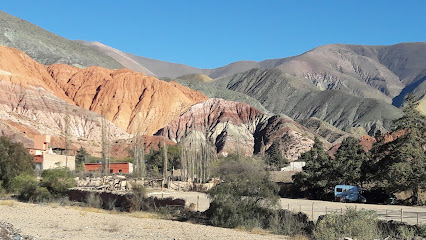
Paseo de Los Colorados
Explore the vibrant landscapes of Paseo de Los Colorados in Purmamarca, a stunning hiking area showcasing nature's colorful artistry.
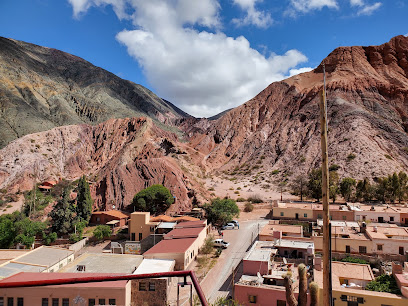
Mirador panoramico de Purmamarca
Experience the breathtaking vistas of the Hill of Seven Colors at the Mirador Panoramico de Purmamarca in Argentina's stunning Jujuy Province.
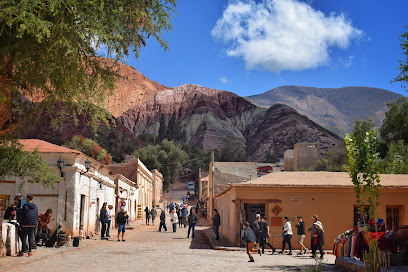
Santa Rosa de Lima Church
Discover the enchanting Santa Rosa de Lima Church in Purmamarca - a stunning blend of history, culture, and breathtaking Andean scenery.
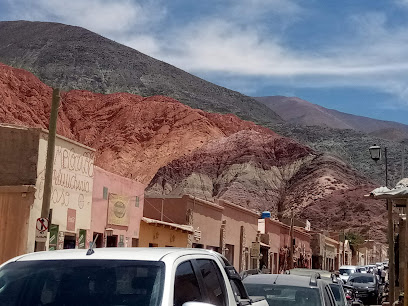
Paseo de los colorados
Experience the breathtaking beauty of Paseo de los Colorados in Purmamarca, where vibrant hills meet serene landscapes in Argentina's stunning natural paradise.
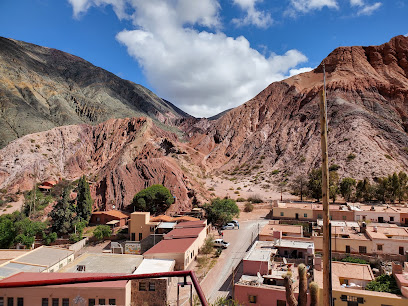
Algarrobo Histórico
Explore Algarrobo Histórico in Purmamarca, a stunning historical landmark showcasing rich culture and breathtaking natural beauty in Jujuy Province, Argentina.
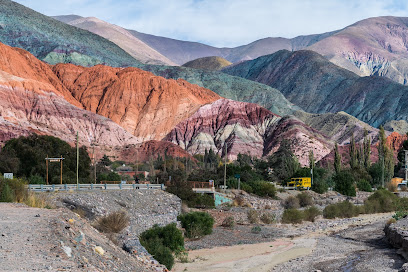
Laguna La Doncella
Explore the breathtaking beauty of Laguna La Doncella in Jujuy, Argentina - a tranquil lagoon surrounded by stunning mountain landscapes.
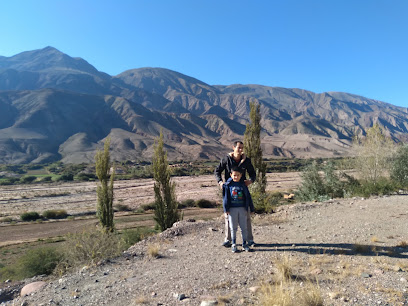
Mirador cartel purmamarca
Discover the breathtaking views of Cerro de los Siete Colores at Mirador Cartel Purmamarca, a must-see tourist attraction in Argentina's stunning Jujuy Province.

Camino de Excursión de Pumamarca
Explore the breathtaking landscapes and rich cultural heritage of the Camino de Excursión de Pumamarca, an unmissable hiking experience in Jujuy Province.
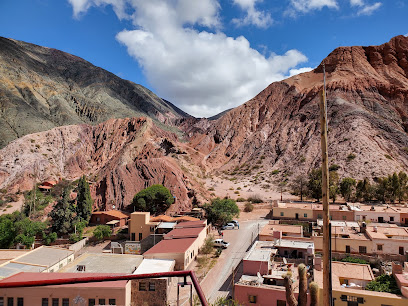
Rocosas de Jujuy
Explore the breathtaking Rocosas de Jujuy, a natural wonder in Argentina's Jujuy Province, showcasing stunning rock formations and vibrant landscapes.
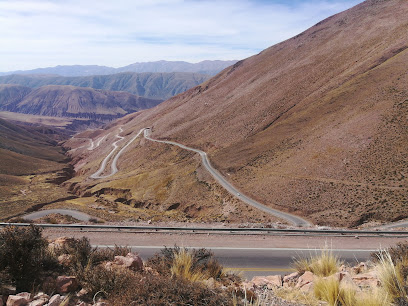
Bienvenidos a Purmamarca
Explore Purmamarca, Argentina's stunning village with colorful mountains, rich culture, and artisanal crafts, perfect for an unforgettable travel experience.

Cartel Jujuy Energia Viva
Discover Cartel Jujuy Energia Viva, a stunning tourist attraction in Purmamarca that showcases the vibrant culture and breathtaking landscapes of Jujuy Province.
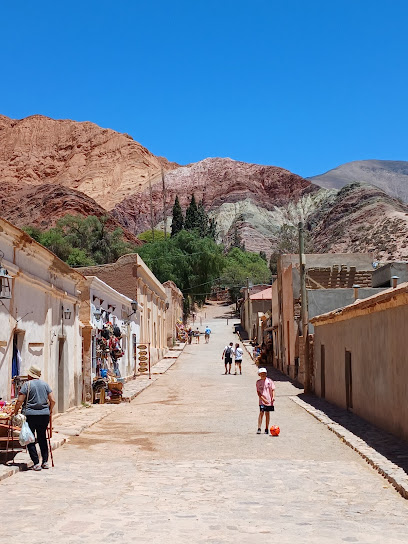
Mirador El Paso
Discover the stunning landscapes of Mirador El Paso, a must-visit hiking area in Purmamarca, Jujuy Province, Argentina, offering breathtaking panoramic views.
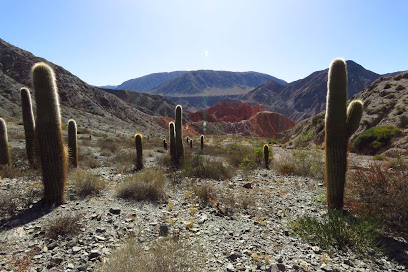
Fuente Plaza
Discover the vibrant culture and stunning landscapes at Fuente Plaza in Purmamarca, a must-visit destination in Jujuy, Argentina.

Essential places to dine
El Rincón de Claudia Vilte
Experience authentic Argentinian flavors at El Rincón de Claudia Vilte in Purmamarca - a must-visit cafeteria known for its delightful pizzas and warm atmosphere.
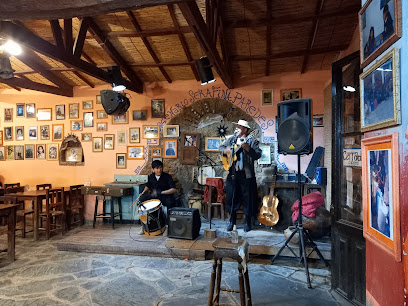
Los Morteros
Discover authentic Argentinian flavors at Los Morteros in Purmamarca - where culinary tradition meets local wines amid stunning mountain views.
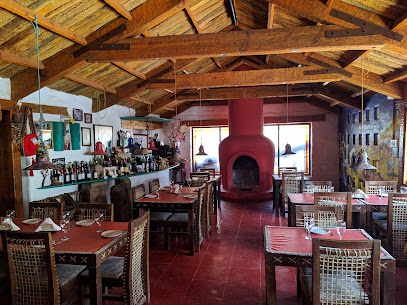
Kuntur Resto Bar
Experience authentic Argentinian cuisine at Kuntur Resto Bar in Purmamarca - where every dish tells a story!
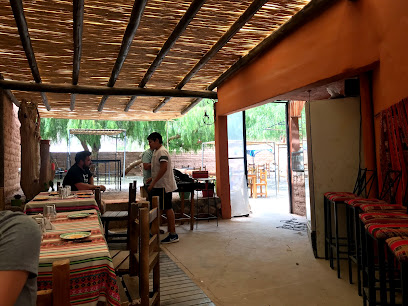
Ruta 52 Cafeteria Restaurante
Discover authentic Argentine cuisine amidst breathtaking landscapes at Ruta 52 Cafeteria Restaurante in Purmamarca.
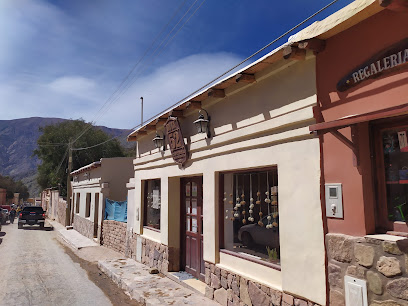
Tierra de Colores
Experience authentic Argentine cuisine at Tierra de Colores in Purmamarca, surrounded by breathtaking mountain views and vibrant local culture.
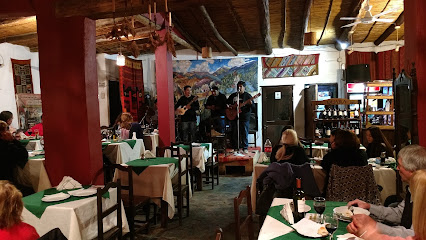
Marito's Sandwich Shop
Discover Marito's Sandwich Shop: A charming eatery in Purmamarca serving delightful sandwiches at affordable prices amidst stunning landscapes.
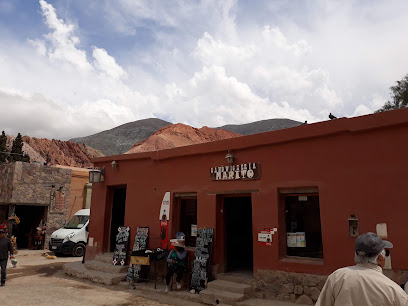
Del Sol Parrilla Restaurante
Experience authentic Argentine cuisine at Del Sol Parrilla Restaurante in Purmamarca - where tradition meets breathtaking mountain views.
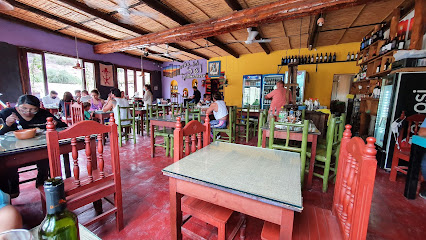
RESTAURANTE EL ALGARROBO
Savor authentic Argentine cuisine at Restaurante El Algarrobo in Purmamarca - a delightful blend of flavors and stunning views await you!
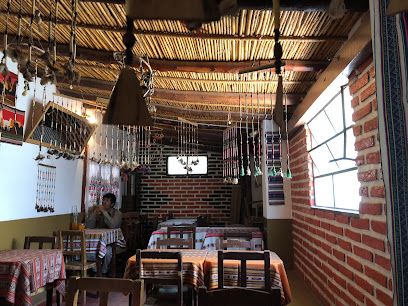
Ci Vediamo
Discover culinary excellence at Ci Vediamo – where authentic Italian pizza meets local flavors in the heart of Purmamarca.
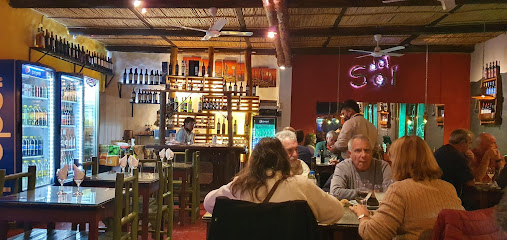
Pedro Pan
Discover Pedro Pan in Purmamarca - where authentic Argentine cuisine meets stunning landscapes for an unforgettable dining experience.
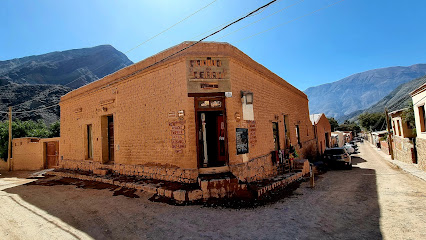
La Casa del Sol
Experience authentic Argentine flavors at La Casa del Sol in Purmamarca, where culinary delights meet warm hospitality.

El Mesón
Experience authentic Argentine cuisine at El Mesón in Purmamarca, where local flavors meet warm hospitality amidst stunning landscapes.
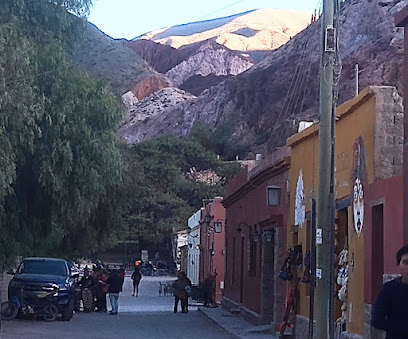
Los Tientos no está más allí
Discover authentic Argentine cuisine at Los Tientos in Purmamarca—where local flavors meet breathtaking mountain views.
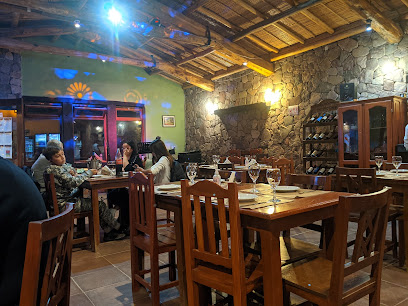
Sabores Del Norte
Discover authentic Argentine flavors at Sabores Del Norte in Purmamarca - where culinary tradition meets breathtaking landscapes.
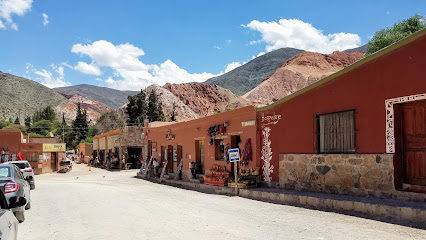
Don Heriberto Resto Bar Cultural Purmamarca
Discover traditional Argentine cuisine at Don Heriberto Resto Bar in Purmamarca - where culture meets flavor amidst stunning landscapes.
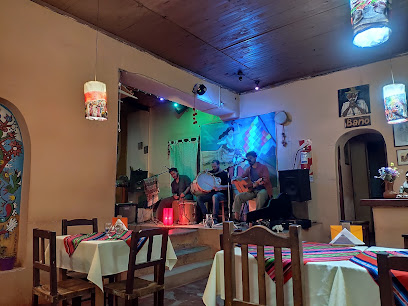
Markets, malls and hidden boutiques
Feria Artesanal de Purmamarca
Explore the vibrant Feria Artesanal de Purmamarca, a local artisan market showcasing unique crafts and exquisite flavors set against breathtaking landscapes.
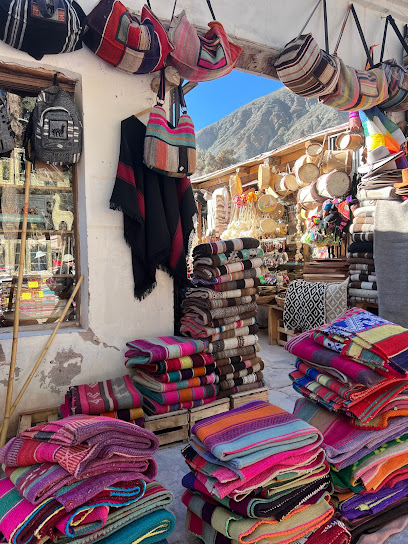
Tejidos Llama Negra
Explore the colorful world of Tejidos Llama Negra in Purmamarca, where authentic Argentine textiles and vibrant handicrafts await every visitor.
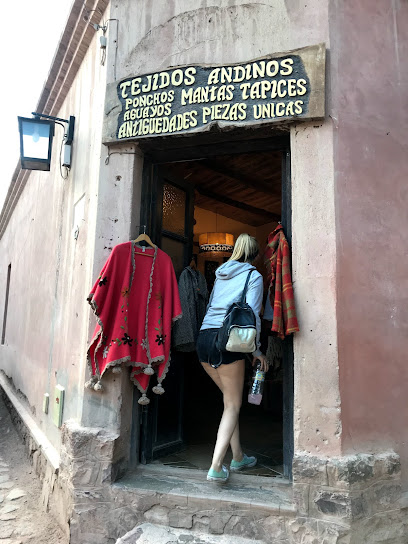
Buenas Costumbres
Discover unique clothing and artisan crafts at Buenas Costumbres, a charming store in the heart of Purmamarca, Argentina.
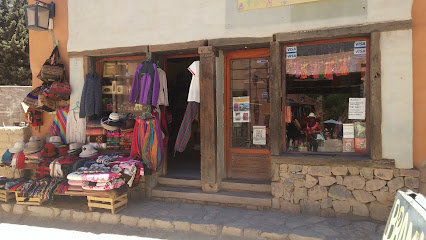
Regionales Purmamarca II
Explore Regionales Purmamarca II for authentic Argentine crafts and fashion accessories in the heart of Jujuy Province.
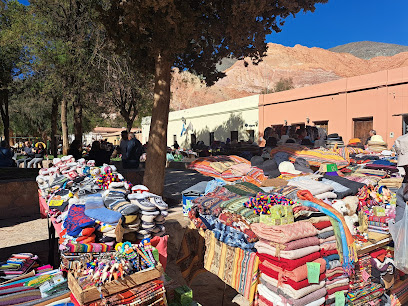
Aywira
Discover the essence of Argentine culture at Aywira in Purmamarca, offering unique clothing and souvenirs crafted by local artisans.
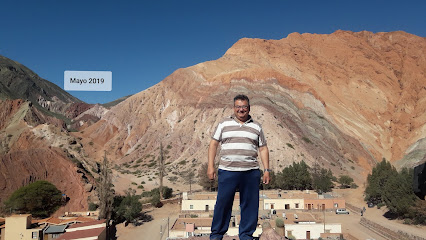
Tierra mía purmamarca
Discover authentic Argentinian crafts at Tierra Mía in Purmamarca, a souvenir store filled with unique treasures and local artistry.
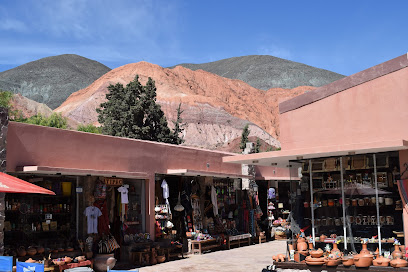
MONTAÑAnort
Discover your adventure gear at MONTAÑAnort, the ultimate outdoor equipment shop in Purmamarca, Jujuy Province.
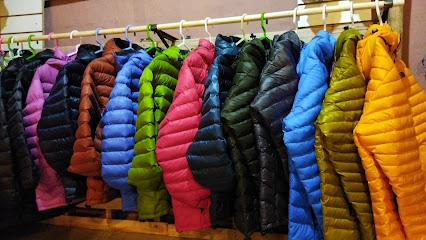
Posibilidades posibles arte bar
Explore the vibrant creativity of Jujuy at Posibilidades Posibles Arte Bar, where every piece tells a story.
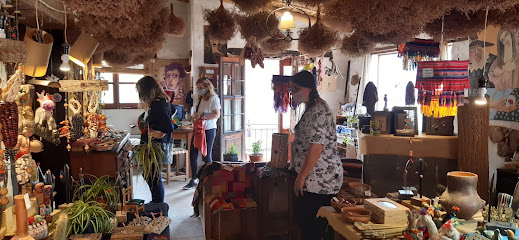
Purma-Pacha
Explore Purma-Pacha: A charming clothing boutique in Purmamarca, showcasing vibrant textiles and authentic local craftsmanship.
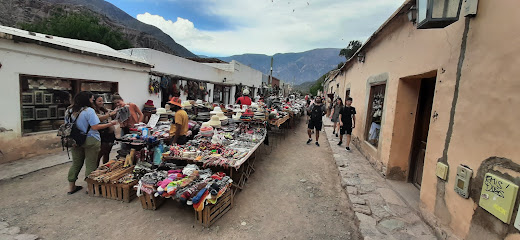
India artesanias
Discover the vibrant crafts of Purmamarca at India Artesanias, where local artistry meets the stunning beauty of Jujuy Province.
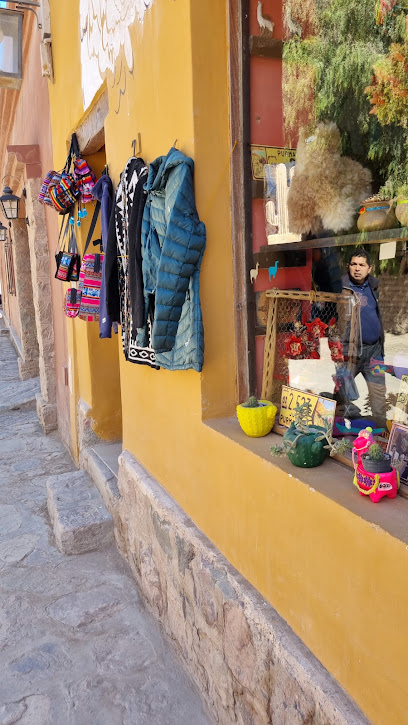
De Mi Tierra
Explore the vibrant culture of Jujuy at De Mi Tierra, where traditional Argentine clothing meets contemporary style in Purmamarca.
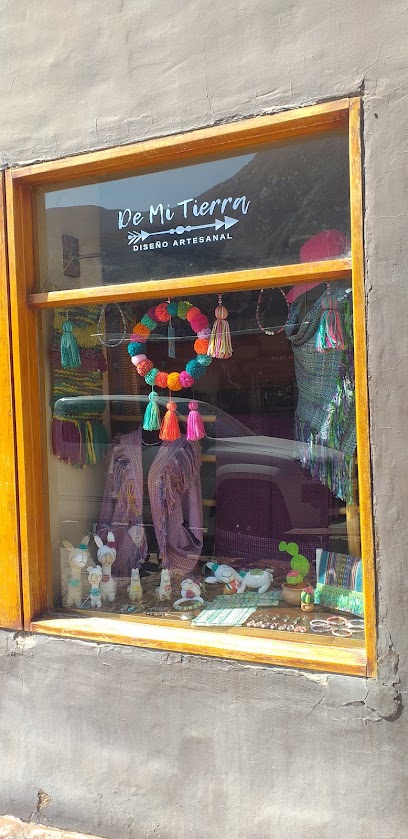
Vinería Del Norte
Explore Vinería Del Norte in Purmamarca for the finest local wines and artisanal treats in a warm, inviting atmosphere.
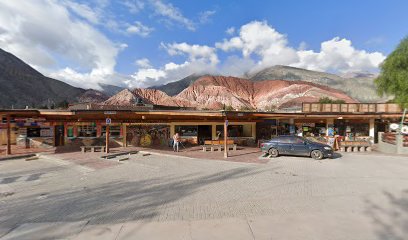
Doña María de Pérez
Explore authentic Argentine craftsmanship at Doña María de Pérez, your go-to souvenir store in Purmamarca for unique clothing, pottery, and upholstery.

Airampo artesanías y decoracion
Explore the vibrant world of handcrafted gifts at Airampo Artesanías y Decoración in Purmamarca, where local artistry meets unique treasures.
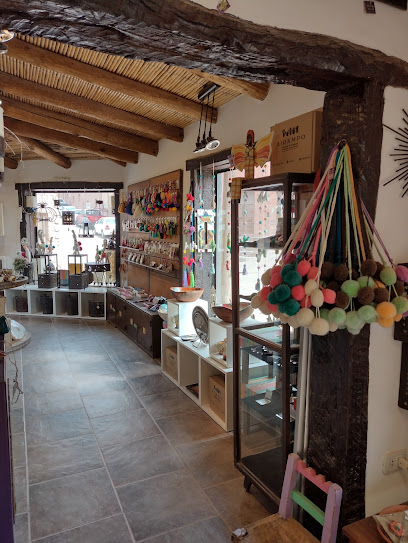
La casa del cardón
Discover the vibrant artisan crafts of La Casa del Cardón in Purmamarca, where culture and creativity flourish in every handmade treasure.
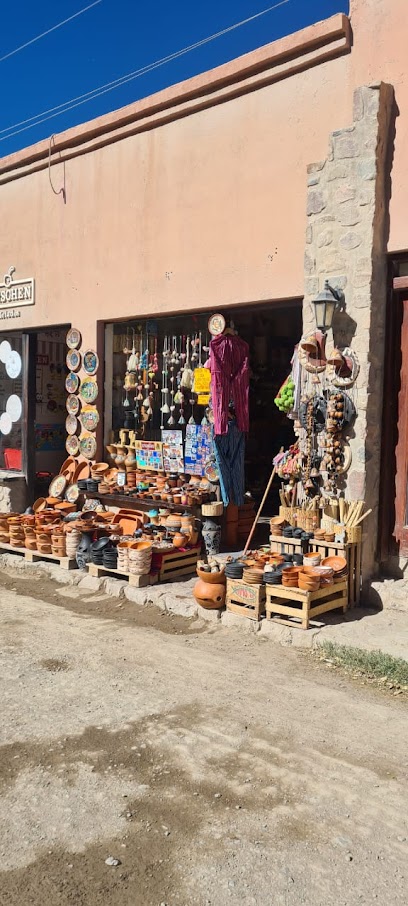
Essential bars & hidden hideouts
Los Morteros
Discover the heart of Argentinian cuisine at Los Morteros in Purmamarca, where exquisite dishes and fine wines await you amidst stunning mountain views.
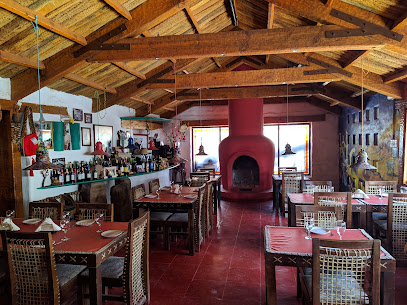
Kuntur Resto Bar
Experience the authentic flavors of Jujuy at Kuntur Resto Bar, nestled in the charming town of Purmamarca.
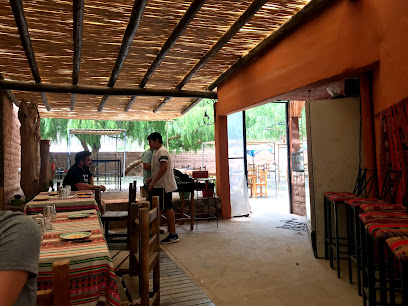
Bramasole
Savor the flavors of Argentina at Bramasole, a grill restaurant in Purmamarca, surrounded by breathtaking mountain views.
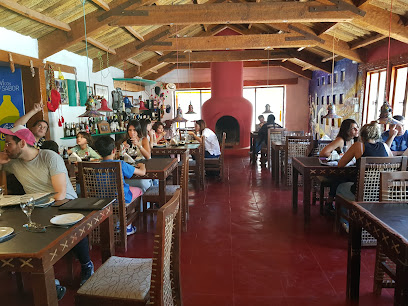
El morado bar cafe
Experience the charm of El Morado Bar Café in Purmamarca, where local flavors meet breathtaking views in a cozy atmosphere.
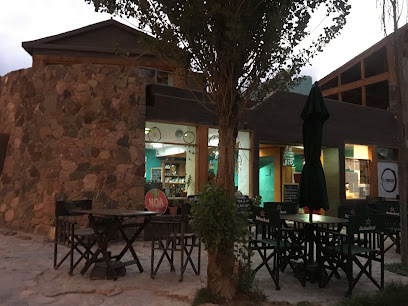
Pedro Pan
Experience the vibrant flavors and warm hospitality of Pedro Pan, a must-visit bar and restaurant in the heart of Purmamarca, Jujuy.
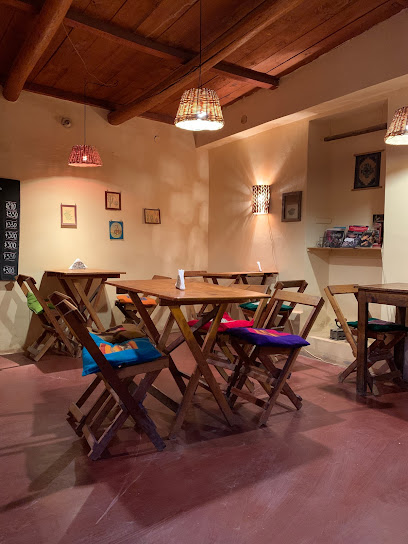
La Casa del Sol
Discover the authentic tastes of Argentina at La Casa del Sol, a cozy bar and restaurant in the heart of Purmamarca offering local flavors and vibrant atmosphere.
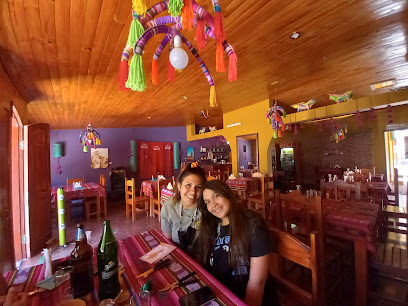
Don Heriberto Resto Bar Cultural Purmamarca
Discover the vibrant flavors of Purmamarca at Don Heriberto Resto Bar, where authentic Argentine cuisine meets a welcoming atmosphere.
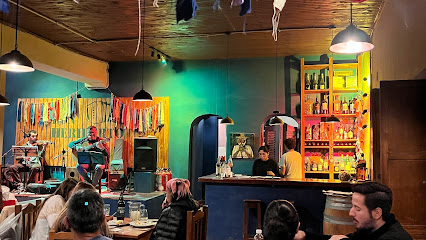
Entre Amigos
Discover the flavors of Jujuy at Entre Amigos, a cozy bar and restaurant in Purmamarca, offering local cuisine and refreshing drinks.

Cerveceria Artesanal Purmamarca
Discover the flavors of Jujuy at Cerveceria Artesanal Purmamarca, where local craft beer meets stunning mountain views in a cozy bar atmosphere.
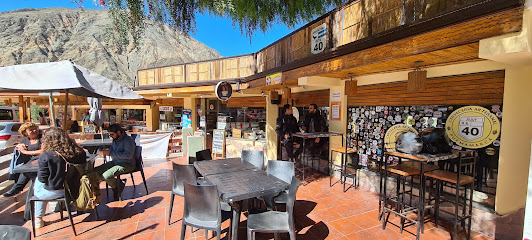
Amaru Bar
Discover the vibrant flavors and stunning views at Amaru Bar, a premier gastropub in Purmamarca, perfect for food lovers and travelers alike.

Lo De Mateo
Discover the charm of Lo De Mateo, a pet-friendly bar and restaurant in Purmamarca, where culinary delights meet a warm atmosphere.
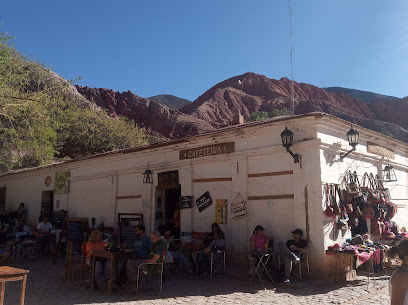
Pasakana Resto Bar - Purmamarca
Experience the vibrant flavors of Purmamarca at Pasakana Resto Bar, where local cuisine meets stunning mountain views.
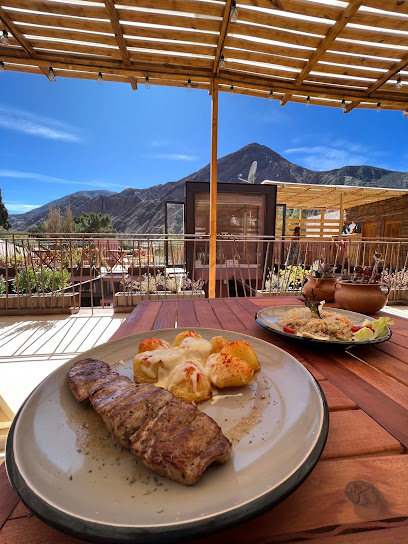
Cactus y Almacen
Discover the charm of Cactus y Almacen, a vibrant bar in Purmamarca where local culture and stunning landscapes create a memorable experience.
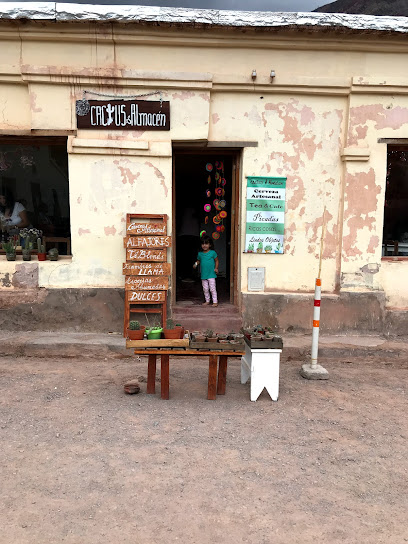
Doña Ali Restó Bar
Discover the flavors of Argentina at Doña Ali Restó Bar, where authentic cuisine meets breathtaking views in Purmamarca.
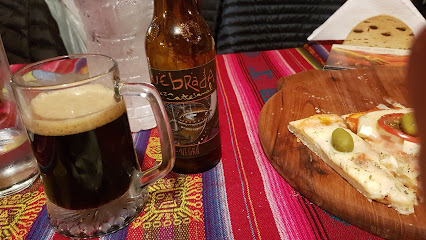
Empanadas Arte Mestizo
Discover the authentic taste of Argentina at Empanadas Arte Mestizo in Purmamarca, where every bite tells a story of local tradition and flavor.
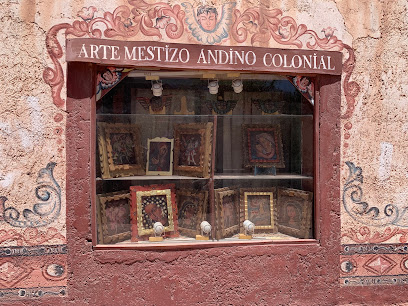
Local Phrases about Purmamarca
-
- HelloHola
[oh-lah] - GoodbyeChau
[ch-ow] - YesSí
[see] - NoNo
[noh] - Please/You're welcomePor favor/De nada
[por fah-vor/deh nah-dah] - Thank youGracias
[grah-syahs] - Excuse me/SorryPerdón
[pehr-dohn] - How are you?¿Cómo estás?
[koh-moh ehs-tahs] - Fine. And you?Bien. ¿Y tú?
[byen. ee too] - Do you speak English?¿Hablas inglés?
[ah-blahs een-glehs] - I don't understandNo entiendo
[noh ehn-tyen-doh]
- HelloHola
-
- I'd like to see the menu, pleaseMe gustaría ver el menú, por favor
[meh goos-tah-ree-ah vehr ehl meh-noo, por fah-vor] - I don't eat meatNo como carne
[noh koh-moh kahr-neh] - Cheers!¡Salud!
[sah-loohd] - I would like to pay, pleaseMe gustaría pagar, por favor
[meh goos-tah-ree-ah pah-gahr, por fah-vor]
- I'd like to see the menu, pleaseMe gustaría ver el menú, por favor
-
- Help!¡Ayuda!
[ah-yoo-dah] - Go away!¡Vete!
[veh-teh] - Call the Police!¡Llama a la Policía!
[yah-mah ah lah poh-lee-see-ah] - Call a doctor!¡Llama a un médico!
[yah-mah ah oon meh-dee-koh] - I'm lostEstoy perdido
[eh-stoy pehr-dee-doh] - I'm illEstoy enfermo
[eh-stoy ehn-fehr-moh]
- Help!¡Ayuda!
-
- I'd like to buy...Quisiera comprar...
[kee-see-eh-rah kohm-prahr] - I'm just lookingSolo estoy mirando
[soh-loh ehs-toy meer-ahn-doh] - How much is it?¿Cuánto cuesta?
[kwan-toh kwes-tah] - That's too expensiveEs demasiado caro
[ehs deh-mah-see-ah-doh kahr-oh] - Can you lower the price?¿Puede bajar el precio?
[pweh-deh bah-har ehl pree-see-oh]
- I'd like to buy...Quisiera comprar...
-
- What time is it?¿Qué hora es?
[keh oh-rah ehs] - It's one o'clockEs la una
[ehs lah oo-nah] - Half past (10)Y media (10)
[ee meh-dee-ah (deez)] - MorningMañana
[mah-nyah-nah] - AfternoonTarde
[tahr-deh] - EveningNoche
[noh-cheh] - YesterdayAyer
[ah-yehr] - TodayHoy
[oy] - TomorrowMañana
[mah-nyah-nah] - 1Uno
[oo-noh] - 2Dos
[dohs] - 3Tres
[trehs] - 4Cuatro
[kwah-troh] - 5Cinco
[seen-koh] - 6Seis
[say-eess] - 7Siete
[see-eh-teh] - 8Ocho
[oh-choh] - 9Nueve
[nweh-veh] - 10Diez
[dyehs]
- What time is it?¿Qué hora es?
-
- Where's a/the...?¿Dónde está...?
[dohn-deh ehs-tah] - What's the address?¿Cuál es la dirección?
[kwahl ehs lah dee-rehk-syohn] - Can you show me (on the map)?¿Puedes mostrarme (en el mapa)?
[pweh-dehs mohs-trahr-meh (ehn ehl mah-pah)] - When's the next (bus)?¿Cuándo es el próximo (colectivo)?
[kwan-doh ehs ehl proh-see-moh (koh-lehk-tee-voh)] - A ticket (to ....)Un boleto (a ...)
[oon boh-leh-toh (ah ...)]
- Where's a/the...?¿Dónde está...?
History of Purmamarca
-
The name 'Purmamarca' comes from the Aymara language, meaning 'Desert Town'. The region has been inhabited for centuries, with evidence of early settlements dating back to pre-Inca times. The indigenous Omaguaca people, known for their advanced agricultural practices and trade networks, were among the earliest inhabitants.
-
In the late 15th century, the Inca Empire expanded its reach into the northwestern regions of what is now Argentina. Purmamarca became an important stop along the Inca Road System, known as the Qhapaq Ñan, which facilitated trade and communication across the vast empire. The Incas left a lasting cultural and architectural influence on the area.
-
The arrival of Spanish conquistadors in the 16th century marked the beginning of a new era for Purmamarca. The Spanish imposed their language, religion, and administrative structures. The town's iconic Santa Rosa de Lima Church, built in 1648, stands as a testament to this colonial period. The church was constructed using adobe and features a distinctive thatched roof, reflecting a blend of indigenous and Spanish architectural styles.
-
Purmamarca played a role in Argentina's struggle for independence from Spanish rule in the early 19th century. The region saw several skirmishes between the Spanish royalist forces and the Argentine patriots. Notably, the Battle of Humahuaca in 1817, which took place nearby, was a significant conflict in the Argentine War of Independence.
-
Purmamarca is renowned for its vibrant cultural heritage, which is celebrated through various festivals and events. The town hosts the annual Fiesta de la Pachamama in August, a traditional Andean festival honoring Mother Earth. During this time, locals and visitors participate in rituals, music, and dance to give thanks for the year's harvest and seek blessings for the future.
-
One of Purmamarca's most iconic landmarks is the Cerro de los Siete Colores, or Hill of Seven Colors. This natural wonder, formed over millions of years, displays a stunning array of colors due to the varying mineral content in the rock layers. The hill is a symbol of the region's geological history and attracts tourists from around the world.
-
In recent decades, Purmamarca has seen a rise in tourism, driven by its rich history, cultural festivals, and natural beauty. The town has developed infrastructure to accommodate visitors, including boutique hotels, artisan markets, and guided tours. Despite these modern developments, Purmamarca has managed to preserve its traditional charm and continues to be a gateway to exploring the Andean culture and landscapes.
Purmamarca Essentials
-
Purmamarca is located in the Jujuy Province of Argentina. The nearest major airport is Gobernador Horacio Guzmán International Airport in San Salvador de Jujuy, approximately 70 kilometers away. From the airport, you can take a taxi or a bus to Purmamarca, which typically takes around 1.5 hours by road. Another option is to fly into El Cadillal Airport in Salta, which is about 150 kilometers away, and then take a bus or rent a car for the scenic drive to Purmamarca.
-
Purmamarca is a small village, and most of its attractions are within walking distance. For exploring the surrounding areas, renting a car can be a convenient option. Local buses and taxis are also available for short trips. The village is well-connected by road to nearby towns like Tilcara and Humahuaca, making it easy to explore the region.
-
The official currency in Argentina is the Argentine Peso (ARS). Credit cards are accepted in some hotels, restaurants, and shops, but it is advisable to carry cash, especially in smaller establishments and rural areas. ATMs are available in Purmamarca, but it is wise to withdraw sufficient cash in larger cities like San Salvador de Jujuy or Salta before traveling to ensure you have enough funds.
-
Purmamarca is generally a safe destination for tourists. However, like any travel destination, it is advisable to take standard precautions. Avoid walking alone at night in unfamiliar areas and keep an eye on your belongings in crowded places. There are no specific high-crime areas targeting tourists in Purmamarca, but it is always best to stay vigilant and aware of your surroundings.
-
In case of emergency, dial 911 for immediate assistance. The local police station and medical facilities are available in Purmamarca. It is recommended to have travel insurance that covers medical emergencies. For minor health issues, there are pharmacies in the village where you can purchase over-the-counter medications.
-
Fashion: Do dress in comfortable clothing suitable for walking and the varying weather conditions. Avoid wearing overly revealing clothing out of respect for local customs. Religion: Do be respectful when visiting religious sites, and avoid making loud noises or taking inappropriate photographs. Public Transport: Do be courteous to other passengers and keep noise levels down. Don't eat or drink on public transport. Greetings: Do greet people with a friendly 'Hola' and a handshake. Eating & Drinking: Do try local delicacies like empanadas and humitas. Don't refuse hospitality, as it is considered impolite.
-
To experience Purmamarca like a local, visit the local markets where you can buy fresh produce and traditional crafts. Engage with locals, as they are often friendly and willing to share stories about the village's history and culture. Don't miss the Cerro de los Siete Colores (Hill of Seven Colors) for a stunning natural spectacle. For a unique experience, attend a local festival or cultural event to immerse yourself in the local traditions.
Trending Landmarks in Purmamarca
-
Pucará de Tilcara
-
Mirador A la cercanía de los 14 Colores del Hornocal
-
Purmamarca Jujuy
-
Cerro El Porito
-
9th of July Square
-
Garganta del Diablo
-
Monumento a los Héroes de la Independencia
-
Cerro de los Siete Colores Viewpoint
-
Comienzo Quebrada de las Señoritas
-
Los Morteros
-
Cerro de los Siete Colores
-
LA COMARCA HOTEL
-
Hotel El Manantial del Silencio
-
Tierra de Colores
-
Colores de Purmamarca
Nearby Cities to Purmamarca
-
Things To Do in Tarija
-
Things To Do in San Pedro de Atacama
-
Things To Do in San Miguel de Tucumán
-
Things To Do in Uyuni
-
Things To Do in Potosi
-
Things To Do in Antofagasta
-
Things To Do in Sucre
-
Things To Do in Iquique
-
Things To Do in Santa Cruz de la Sierra
-
Things To Do in Cochabamba
-
Things To Do in Arica
-
Things To Do in Tacna
-
Things To Do in Asuncion
-
Things To Do in Aregua
-
Things To Do in Ypacarai







